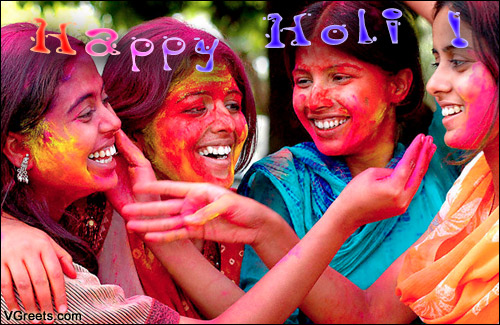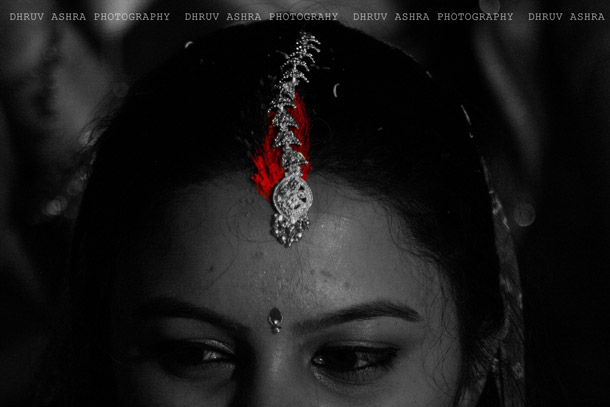[India Report] What colourfulness means to India
India is a very colourful country indeed and people of this country never fails to make their surroundings colurful in their daily life. Colourfulness is a part of everyday life in India. Some colours are used significantly in everyday life whereas some of them are to celebrate and enjoy in festivals. Coloured powders are something very much popular in India.
One of the most significant coloured powders used by Indian women is ‘Sindoor,’ which is a traditional red or orange-red colored cosmetic powder, worn by married women along the parting of their hair. Sindoor is applied for the first time to a Hindu woman during the marriage ceremony when the bridegroom himself adorns her with it.
The ceremony is called Sindoor-Dana. Usage of sindoor denotes that a woman is married in many Hindu communities, and ceasing to wear it usually implies widowhood. The main component of traditional sindoor is usually vermilion. In Hindu religion, married women have been applying sindoor in hair parting since ages.
The prevalence of sindoor can be dated back to about 5000 years ago. Studies show that female figurines excavated from various historical sites reveal the application of sindoor to the partition of women’s hair in the Harappa culture.
But what exactly does sindoor actually represent? Scholars say that red is the color of power while vermilion is a symbol of the female energy of Parvati and Sati. It is believed that a good wife should wear sindoor to ensure the longevity of her husband’s life.
There are scientific reasons behind this belief. The parting line of a woman’s hair where sindoor is applied, there lies the most important spot, the spiritual center called Brahmarandhra, an aperture in the crown of head.
This astral aperture is very sensitive, said to be the gateway to the absolute extending from perineum to the crown of the head, it is the place where parting is drawn and sindoor is applied. Sindoor contains mercury, which is the only metal found in liquid form.
When sindoor is applied in the hair-parting, mercury present in it, acts as a medicine because it is known for removing stress and strain and keeps the brain alert and active also. The custom of filling sindoor in the hair parting is followed only after marriage because as soon as tying the nuptial knot, the free spirited girl suddenly gets transformed into a responsible wife and a daughter-in-law who has to take care of everybody present in her new home.
Thus, under such responsibilities she sometimes gets pressurized. The mercury in the sindoor helps in cooling her down, bringing to her the mental peace. Hence sindoor having mercury in it works as a therapeutic medicine to deal with the pressures of new life by keeping the mind calm, composed and poised.
Coloured powders is the most important and significant ingredient in one of the biggest festivals, the festival of colours known as ‘Holi’. Colours are main theme of Holi festival.
It is primarily observed in India, Bangladesh, Pakistan, Nepal, and countries with large Indic diaspora populations following Hinduism, such as Suriname, Malaysia, Guyana, South Africa, Trinidad, United Kingdom, United States, Mauritius, and Fiji.
It is also known as Phagwah and Festival of Colours, or as Doḷajāta in Orissa and Dol Jatra in West Bengal. The most celebrated Holi is in the Braj region, in locations connected to the Lord Krishna: Mathura, Vrindavan, Nandagaon, and Barsana, which become tourist destinations during the season of Holi.
According to Hindu mythology, there are many legends attached to this festival. According to one legend, Holi is celebrated in spring in commemoration of the divine love of Radha for Krishna. Legend also says that Lord Krishna which is also famous with another name Kahna who used to go along with his friends to Radha’s village to play Holi with her and her friends (Gopiyan).
This festival brings people together. In general, people would go to open to celebrate Holi. They will rub colored powder on each other’s forehead or face and then hug each other, irrespective of being friend or foe. People may go to their neighbors or relatives homes to distribute Mithai (traditional sweet).
In many region, there is a tradition of drinking a traditional drink which is called Bhang and made of Cannabis (which is legal in India under government controlled supply). The whole atmosphere becomes jubilant during the festival period.
The coloured powder is known as abir in some parts of india. Abir is available in synthetic or natural form. Its colors are derived from flower extracts, for instance aparajita, marigold, hibiscus and dopati. The dye is sometimes combined with mica powder to create a sparkling effect. Abir is typically sold in markets prior to the festival.
This ‘Abir’ is also used in many other occasions in India. Mostly ‘Victory’ is celebrated with this coloured powders. People through ‘abir’ on each other to express their happiness regarding such victory or some other joyful occasions.
Coloured powder is again popularly used in India is to paint ‘Rangoli’. Rangoli is a folk art from India. The patterns are typically created with materials, including colored rice, dry flour,(coloured) sand or even flower petals and coloured powders or abir. It is traditionally done by women.
Generally, this practice is showcased during occasions such as festivals, auspicious observances, celebrations of marriages and other similar milestones and gatherings. Rangoli is used as a symbol of religious and cultural beliefs, specifically Hindu.
It is considered an important part of the spiritual process; it might be called the purification of the spirit and the prosperity that lies behind such purification. Rangoli is not just a medium of decoration but it reduces negative energy and adds positivity to places where it made as believed by the people of India.
Sudhanya Ghosh Intern Reporter news@theasian.asia














































































Pingback: 인도, 여성 머리에 바르는 파우더는 ‘빨간색’ « All « 아시아엔